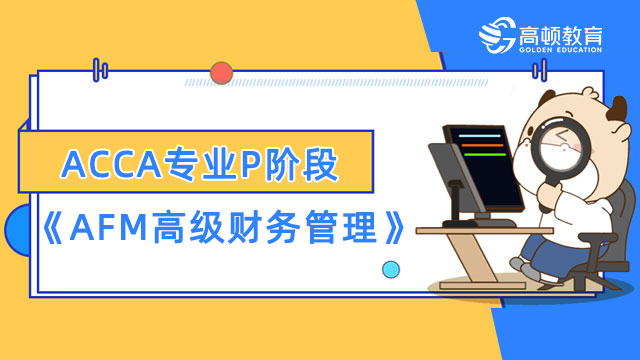2014年ACCA考试(p3商务分析)考前总结10
来源:
高顿网校
2014-07-22
以下是高顿网校小编为学员整理的:p3商务分析,供学员参考。
TYPES OF BENCHMARK
There are a number of different ways in which benchmarks can be established. A common categorisation of the approaches is as follows:
Internal benchmarking. This does not mean simply inventing an objective internally out of thin air because benchmarking implies comparison. Internal benchmarks are likely to be set by looking at historical performance or performances achieved by different branches or divisions. If last period’s actual results showed that it took 12 minutes to produce each unit, then it might be valid to set a benchmark of 11.5 minutes for the next period. Similarly, if the best branch achieved a net profit percentage of 15%, then that might be a valid target to set all branches.
The potential danger with these approaches is that they are both inward-looking. Therefore:
· No attention has been paid to what other organisations, such as competitors, are achieving. Note that Porter talks of the need to achieve competitive advantage. It’s all very well saying that our best branch achieves 15% net profit, but what if competitors routinely achieve 18%? Similarly, last year’s production time of 12 minutes might be way in excess of more efficient producers.
· Additionally, the opportunities for learning are small. If an organisation does not realise that competitors are better, not only is that dangerous in itself, but the organisation will never be inspired to try to find out how competitors do better.
However, internal benchmarking can have advantages, such as:
· access to the required data should be quick, easy and cheap
· it might be the only method if there are no external suitable companies for comparison
· it might be the only approach possible where other companies’ data is confidential and difficult to obtain.
Industry benchmarking. In this approach, benchmarks are set by looking at what other organisations in the same industry achieve. Industry benchmarking can be divided into:
· non-competitor benchmarking
· competitor benchmarking.
Examples of non-competitor benchmarking can be seen in comparing treatment results for hospitals in different towns, the efficiency of rubbish collection by different local authorities and the exam success of children in different schools. Because the different organisations are not in competition, the exchange of data should be relatively open, though an organisation that thinks it is performing poorly might be reluctant to release its data. Therefore, governments often insist that state enterprises, such as schools or hospitals, publish statistics as it is recognised that this is important information for managers, staff, users of the facilities and government. The hope is that by publishing the data, poorer performers will be motivated to improve their game and to learn from good performers.
Examples of competitor benchmarking can be seen in aircraft turnaround times (how long the aircraft is on the ground between flights) and the load factor (what percentage of seats are occupied) for different airlines. Both of these are relatively easy to measure because they are very visible and you can be sure that airlines keep a close watch on their competitors’ statistics. However, you will appreciate that many of the most interesting pieces of data about a competitor will not be easily accessible and that competitors will often try to keep this information confidential to try to maintain their own competitive advantage. Manufacturing companies sometimes use reverse engineering to attempt to calculate competitors’ costs. It is common, for example, for car companies to buy a competitor’s new model and to dismantle it carefully as the basis for estimating production costs and time.
Although industry benchmarking might seem to be almost foolproof, there is a danger that benchmarks are inappropriate because comparisons are made with the wrong organisation or because no allowance has been made for important differences. Therefore, when comparing the performance of children in schools, it would probably be valid to make allowance for schools in different parts of town. A school in a relatively rich area where many parents are well-educated and supportive of their children might be expected to outperform a school in a poorer area. In addition, an organisation might not be perceived as a competitor (and therefore not used for benchmarking) when in fact it is in competition. For example, there is no point in being a really efficient producer of inexpensive stand-alone digital cameras when that market is being supplanted by the increasing quality of cameras in mobile phones. Similarly, the exercise would be of limited use in comparing the costs of customer interactions in a traditional bank with those of a purely online bank.
Sometimes, organisations in a particular sector set up collaborative benchmarking. Data can be shared either openly (where there is no competition) or anonymously (where there is competition) so that the whole industry can make use of the data to improve. Thus, in the UK each year the Department for Business, Innovation and Skills (a government department) publishes key performance indicator data (around 700 datasets) for the construction industry. Each company will be able to recognise its own data and therefore judge how it is performing relatively.
Best-in-class benchmarking. In this approach, rather than comparing entire organisations, the individual activities of an organisation are compared to those activities in other organisations where the activities are carried out really well. So, it would be valid for a telephone-based bank to compare its call answering times to those in an organisation in a different sector that had a very good reputation in dealing promptly with phone calls. From a pricing perspective, a hotel business might learn a lot from studying how airlines change their fares in response to demand. Both hotel room vacancies and unoccupied aircraft seats are perishable commodities and maximising profits in both industries depends on enticing in the last guest or traveller at the maximum marginal revenue.
One of the most famous examples of best-in-class benchmarking is that of airlines improving their turnaround times by benchmarking themselves against Formula One racing car pit-stop operations. In both cases, there will be both routine operations to be carried out efficiently and occasional emergency or unexpected repairs and replacements of components. Well-trained teams, spares inventories, technician availability will be essential to the success of both operations.
The great strength of best-in-class benchmarking is the high degree of learning that is encouraged. The observation of very successful processes and activities, wherever found, will often generate radical innovation and improvement in an organisation’s competitive strength. Furthermore, very good performance in one aspect of a certain industry, perhaps a very slick website in a travel site, is likely to raise customers’ expectations in many different industries, so that slick websites are expected everywhere.
高顿网校小编寄语:天道酬勤,相信自己!Fighting!

扫一扫微信,*9时间获取2014年ACCA考试报名时间和考试时间提醒
高顿网校特别提醒:已经报名2014年ACCA考试的考生可按照复习计划有效进行!另外,高顿网校2014年ACCA考试辅导高清课程已经开通,通过针对性地讲解、训练、答疑、模考,对学习过程进行全程跟踪、分析、指导,可以帮助考生全面提升备考效果。
报考指南:2014年ACCA考试备考指南
免费题库:2014年ACCA考试免费题库
考前冲刺:ACCA备考秘籍
高清网课:ACCA考试网络课程
报考指南:2014年ACCA考试备考指南
免费题库:2014年ACCA考试免费题库
考前冲刺:ACCA备考秘籍
高清网课:ACCA考试网络课程
版权声明:本条内容自发布之日起,有效期为一个月。凡本网站注明“来源高顿教育”或“来源高顿网校”或“来源高顿”的所有作品,均为本网站合法拥有版权的作品,未经本网站授权,任何媒体、网站、个人不得转载、链接、转帖或以其他方式使用。
经本网站合法授权的,应在授权范围内使用,且使用时必须注明“来源高顿教育”或“来源高顿网校”或“来源高顿”,并不得对作品中出现的“高顿”字样进行删减、替换等。违反上述声明者,本网站将依法追究其法律责任。
本网站的部分资料转载自互联网,均尽力标明作者和出处。本网站转载的目的在于传递更多信息,并不意味着赞同其观点或证实其描述,本网站不对其真实性负责。
如您认为本网站刊载作品涉及版权等问题,请与本网站联系(邮箱fawu@gaodun.com,电话:021-31587497),本网站核实确认后会尽快予以处理。
点一下领资料
【整理版】ACCA各科目历年真题
真题高频考点,刷题全靠这份资料
下载合集
acca全科学习思维导图
梳理核心考点,一图看懂全部章节
下载合集
2023年acca考纲解析
覆盖科目重难点,备考按照计划走
下载合集
acca备考 热门问题解答
- acca考试怎么搭配科目?
-
建议优先选择相关联的科目进行搭配报考,这样可以提高备考效率,减轻备考压力,1、F1-F4:为随时机考科目,难度较低,这里可以自行随意选择考试顺序。2、F5-F9:如果你的工作的和财务会计或者审计有关、或者你比较擅长财务和审计的话,推荐先考F7和F8。你可以选择一起考ACCA考试科目F7和F8或者先考F7(8)再考F8(7),这就要取决你一次想考几门。3、P阶段:选修科目中,建议企业首选AFM!第二部分科目进行选择,如果AA和SBR掌握学生更好,可以通过选择AAA,如果SBL掌握的好,可以自己选择APM。
- acca一共几门几年考完?
-
acca一共有15门考试科目,其中有必修科目和选修科目,考生需要考完13门科目才能拿下证书。
- acca一年考几次?
-
acca一年有4次考试,分别是3月、6月、9月和12月,分季机考科目是采取的这类四个考季的模式,而随时机考则是没有这方面的时间规定限制,可以随报随考。
- acca的含金量如何?
-
ACCA证书的含金量是比较高的,从就业、能力提升、全球认可等角度来说,都是比较有优势的证书,其含金量主要表现在以下几个方面:1、国际化,认可度高;2、岗位多,就业前景好;3、缺口大,人才激励。
严选名师 全流程服务
其他人还搜了
热门推荐
-
acca专业阶段考试科目有哪些?究竟都考些什么? 2023-04-23
-
accaP阶段科目考完需要多久?速戳了解! 2023-03-28
-
ACCA高级课程是哪几门?和基础课程比难度怎么样? 2023-03-17
-
sbr和sbl哪个难?accaP阶段先考哪个? 2023-03-16
-
accaP阶段报名费是多少?一文介绍全了! 2023-03-14
-
accaP阶段有哪些科目?各科目详细介绍! 2023-03-14
-
accap阶段考试顺序是怎样的?选修科目怎么选? 2023-03-10
-
acca考试科目:《ATX高级税务》重点详解! 2023-03-06
-
acca考试科目:《APM高级业绩管理》重点详解! 2023-03-06
-
acca考试科目:《AFM高级财务管理》重点详解! 2023-03-06
-
accap阶段有效期是多久?需要几年内考完? 2023-03-01
-
accaP阶段选修选哪两门?各科难度对比来了! 2023-02-28
-
2023年acca的sbl怎么学?点击查收备考攻略! 2023-02-24
-
acca考试p阶段科目题型,附各科分值参考! 2023-02-23
-
accap阶段要考几门?重难点是什么? 2023-02-10
-
accap阶段要考几门?重难点是什么? 2023-02-10
-
accaP阶段科目怎么搭配?先考哪门? 2023-02-09
-
ACCA专业P阶段:《AFM高级财务管理》复习攻略 2023-01-30
-
accap阶段选哪两门?考试重难点介绍! 2023-01-17
-
acca考试科目:《AAA高级审计与鉴证》题型及重点! 2023-01-17
-
acca专业阶段考试难度分析,选修科目报考指南来了! 2023-01-12
-
accap阶段报考顺序推荐,先报哪个好? 2022-12-15
-
ACCAp阶段一次最多考几门?成绩有效期是多久? 2022-08-24
-
ACCA的p阶段需要备考多久才够?考试难度怎么样? 2022-08-18
-
ACCAp阶段考试需要考几门?考试时间是哪天? 2022-08-15
-
ACCA考试P阶段考几门?P阶段成绩有效期是多久? 2022-08-12
-
ACCAP阶段科目难度高吗?P阶段是机考吗? 2022-08-10
-
ACCA最后四门难考吗?通过率怎么样? 2022-07-19
-
ACCA英语不好怎么办?怎么提高英语? 2022-07-14
-
ACCA机考报名时间是什么时候?怎么报考? 2022-07-14
 更多服务
更多服务








































